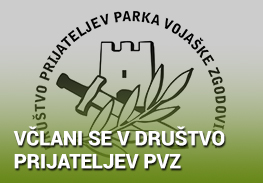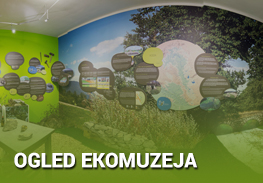Working hours in June
The Park of Military History will be open in May from Monday to Friday between 10 am and 4 pm and on Saturdays and Sundays between 10 am and 6 pm.
Prior reservation of the time slot is mandatory for visiting the submarine’s interior and testing the flight simulator with MiG-21 or Spitfire airplanes as an additional museum offering. This can be done by calling +386 (0)31 775 002 or emailing [email protected].
Park Hosts International “World in Miniature” Festival
The Park of Military History was bustling with activity on Saturday, May 13th, as the museum once again hosted the international “World in Miniature” festival, organized by the eponymous society. Last year, the festival exceeded all expectations, attracting 169 participants from eight countries who showcased 521 models despite the rainy weather. They competed in various categories, including model building. In addition to the competition models, there were displays of model train compositions, remote-controlled aircraft, imaginative dioramas, and race track models.
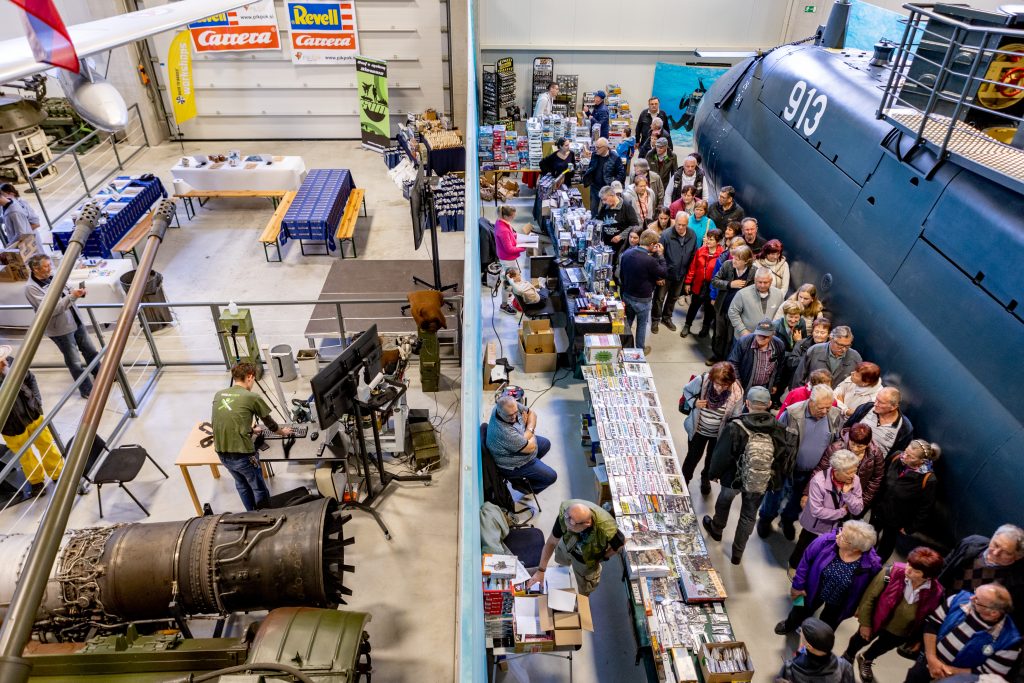
The festival’s vibrant atmosphere drew many visitors to the Park, and they were further entertained by well-stocked sales booths featuring models from various manufacturers, model-building workshops, club presentations, a book fair, and guided tours of the museum exhibitions.
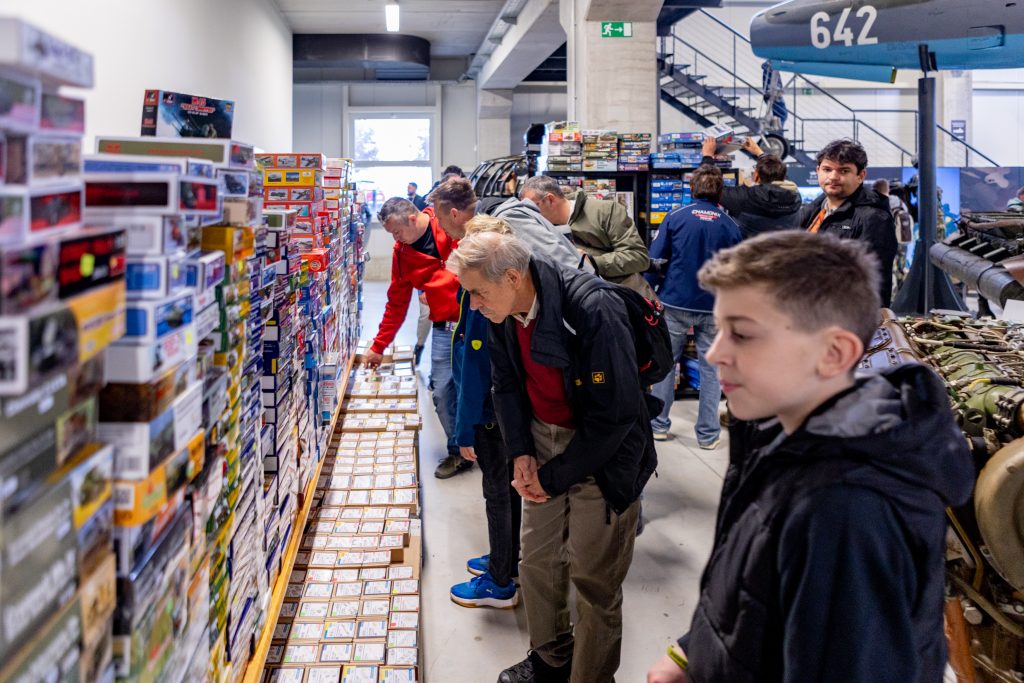 On this occasion, the Park of Military History in Pivka also opened an exhibition of Mr. Marko Mav’s models, showcasing the Yugoslav Air Force from 1945 to 1991. The show will remain open until the end of summer.
On this occasion, the Park of Military History in Pivka also opened an exhibition of Mr. Marko Mav’s models, showcasing the Yugoslav Air Force from 1945 to 1991. The show will remain open until the end of summer.
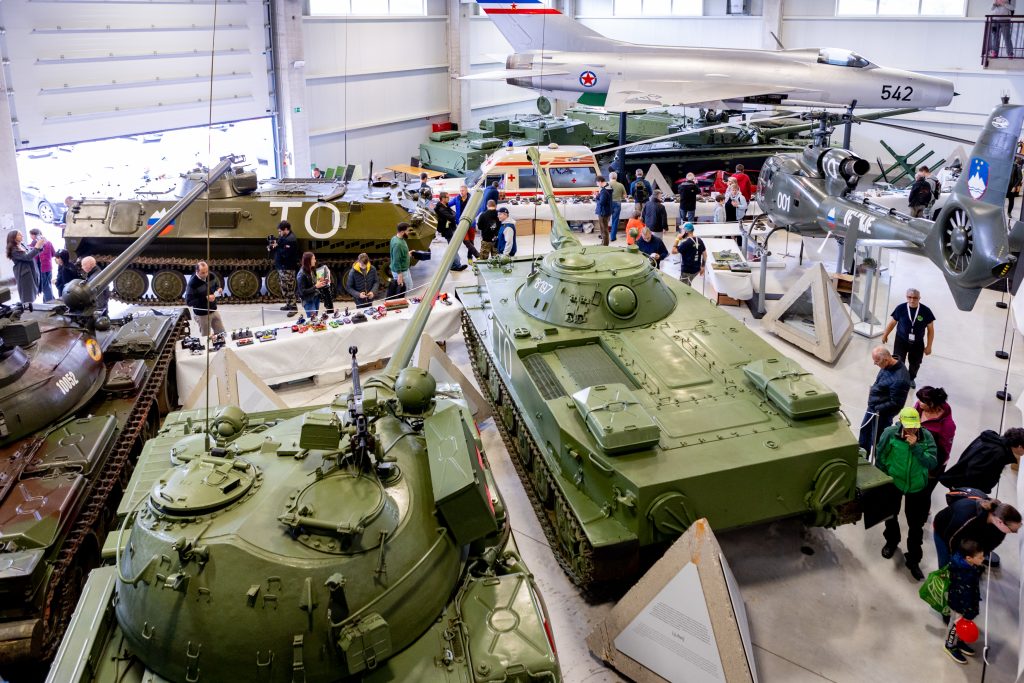
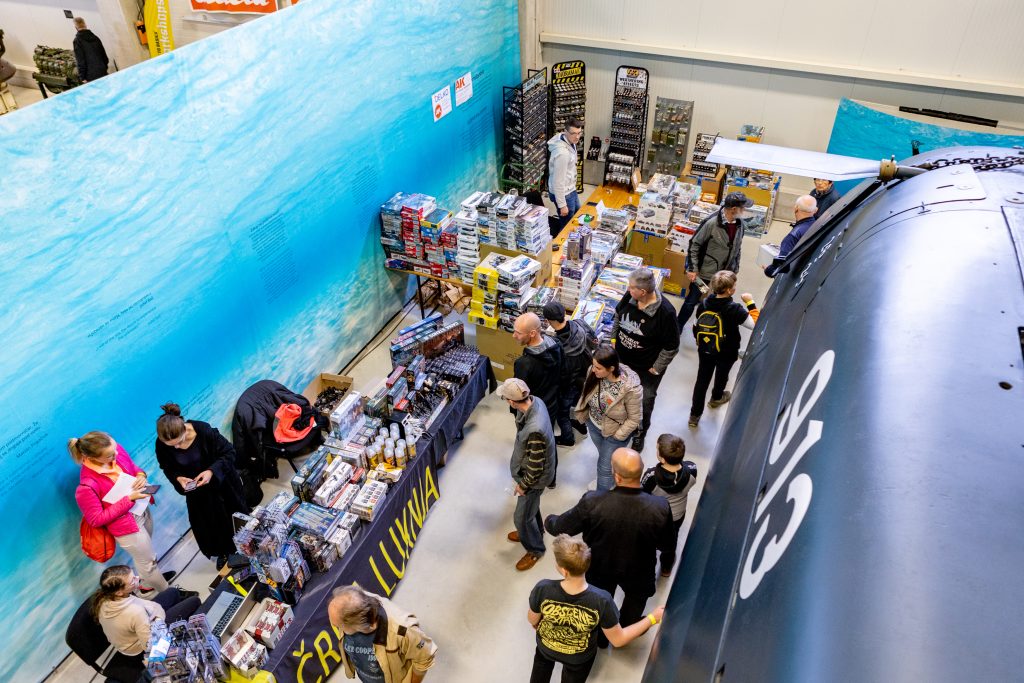
“Enigma – The secret war”
THE PARK OF MILITARY HISTORY and THE SLOVENIAN COMPUTER HISTORY MUSEUM
invite you to a LECTURE by DR. MARK BALDWIN “ENIGMA – THE SECRET WAR”
which will take place on Tuesday, May 23, 2023, at 6 p.m. at the Park of Military History.
Dr. Mark Baldwin, widely known as Dr. Enigma (www.drenigma.org), has established himself as a leading expert on the German encryption device Enigma over the past twenty years. As a professional lecturer, he has enthralled cryptology and military history enthusiasts in numerous countries worldwide. The original Enigma, which Dr. Baldwin uses for a demonstrative display of its operation and which participants can also try out, adds a unique insight to his lectures.
This will also be the case in Pivka, where we are especially pleased that the lecture by this esteemed expert will be one of the principal events accompanying the new exhibition “Enigma – The Mysterious Behind the Scenes of War.”
The lecture will conclude with a presentation by Marko Štamcar from the Slovenian Computer History Museum, unveiling some cryptographic curiosities from our national history.
__
Dr. Baldwin’s lecture will be conducted in English.
The number of seats is limited. Applications are possible until all seats are filled by calling +386 31 775 002 or emailing [email protected].

15th International Scale Model Festiva SVET V MALEM
The Park of Military History will once again host the international miniature festival called “World in Miniature” organized by the Society “Svet v malem”. The festival will bring together hundreds of modelers from different countries who will compete for the best miniature in various categories. The displayed intricate miniatures of military vehicles, vessels, and scenic displays will complement the museum’s exhibition of military-technical heritage on that day. As part of the festival, there will also be demonstrations of model making and a modelers’ flea market.
Saturday, May 13, 2023:
10:00 am – 5:00 pm: Plastic Model Competition
10:00 am – 5:00 pm: Exhibition of Plastic Models
10:00 am – 5:00 pm: Presentation of the World in Miniature Society
10:00 am – 5:00 pm: Model Making Demonstration for Visitors
10:00 am – 5:00 pm: Modelers’ Flea Market
11:00 am: Guided Tour of the exhibition “Fighting behind the Trenches: Military Transport on the Isonzo Front”
1:00 pm: Guided Tour of Ravne Manor Exhibition
2:00 pm: Guided Tour of the exhibition “Enigma – The Mysterious Behind the Scenes of War”
4:00 pm: Guided Tour of the exhibition “The Story of Our Neighbor”
VISITOR INFORMATION:
The organizer reserves the right to change the program.
Reservations are required for visiting the interior of the submarine. Please call 031 775 002 or email [email protected]. Admission fees apply as per the valid price list.
The event will be photographed.

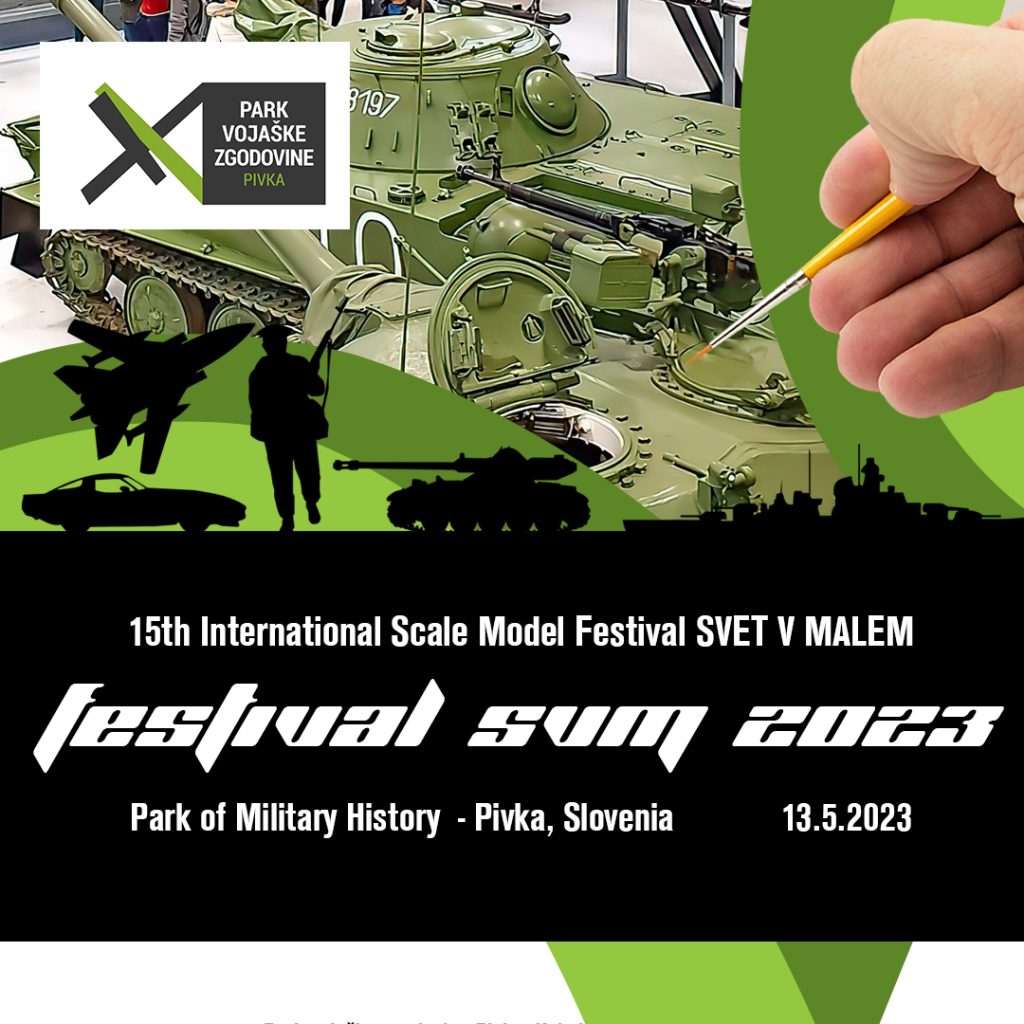
Commemorative ceremony on the anniversary of the Spitfire MH980 plane crash in Suhorje
On May 7th, the Military History Park, in cooperation with the British Embassy in the Republic of Slovenia, organized a memorial ceremony to commemorate the anniversary of the crash of the Spitfire MH980 aircraft near the village of Suhorje in the Brkini region and the death of the aircraft’s pilot, Sergeant Edmund Ramsbotham of the 249th Squadron of the British Royal Air Force. The ceremony honored one of the most famous fighter units of the Royal Air Force, established in August 1918, but achieving its glory in World War II – first in the Battle of Britain and then over Malta, Sicily, Italy, Albania, the Balkans, and finally over Slovenian territory at the end of the war. Sergeant Ramsbotham was the last victim of this famous unit in World War II.

The Minister of Defense of the Republic of Slovenia attended the ceremony, Mr. Marjan Šarec, the Ambassador of the United Kingdom to Slovenia, Her Excellency Tiffany Sadler, who laid wreaths at the monument to the fallen pilot, and former British Ambassador to Slovenia, Mr. David Lloyd.
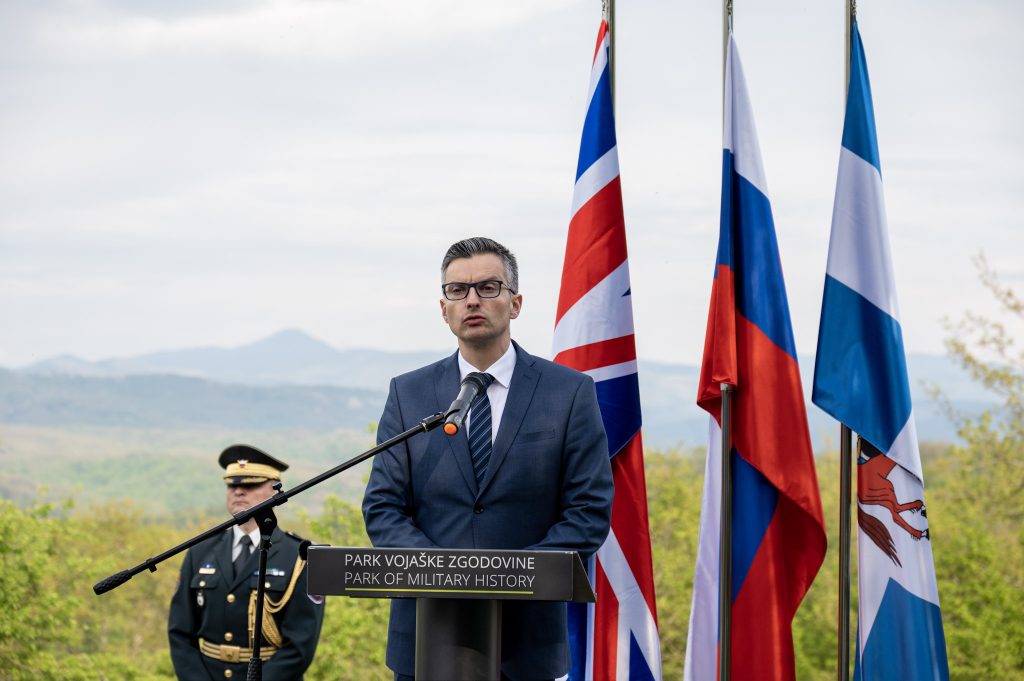
The director of the Military History Park, Mr. Janko Boštjančič, highlighted in his welcome speech that the monument, erected by the Park two years ago, was inscribed with the words “Young Sergeant Ramsbotham died for a free Europe.” He emphasized that they did not realize that this inscription would acquire special meaning and significance a year later with the outbreak of war in Ukraine. The monument has become a symbol of European values and the struggle to defend them.

The Ambassador of the United Kingdom to Slovenia, Her Excellency Tiffany Sadler, also stressed the monument’s symbolic role in her speech. The memorial at the site where a young life was extinguished during the war represents a monument to the Slovenian-British alliance in the joint fight for freedom, for which young and innocent people are still dying on the other side of Europe almost 80 years after the end of World War II.
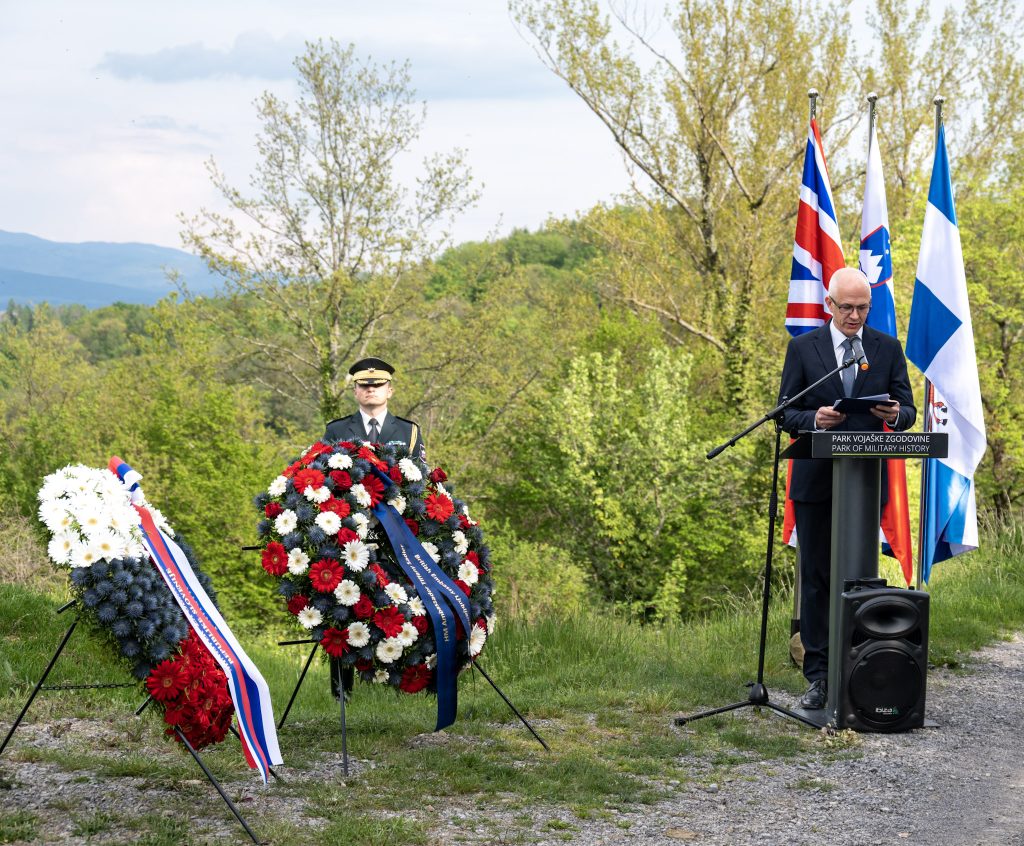
The symbolic role of the monument was emphasized in the ceremonial address by the Ambassador of the United Kingdom to the Republic of Slovenia, Her Excellency Tiffany Sadler. According to her words, the memorial plaque at the site where a young life was extinguished during the war also represents a monument to the Slovenian-British alliance in the joint struggle for freedom. For today, almost 80 years after the end of World War II, young and innocent people are again dying on the other side of Europe. The Ambassador sincerely thanked the Military History Park and the villagers of Suhorje for their dignified commemoration of the tragic death of the pilot and their selfless care to ensure that the memory of his sacrifice will not be forgotten.

The Minister of Defense of the Republic of Slovenia, Mr. Marjan Šarec, also praised the monument’s installation and expressed his gratitude to the Military History Park and the local community of Suhorje. As he emphasized, the commemorative ceremony on the anniversary of the plane crash and the tragic death of the young corporal also remembers all the other young heroes from our history who gave the most they could – their lives – so that we can live in peace.
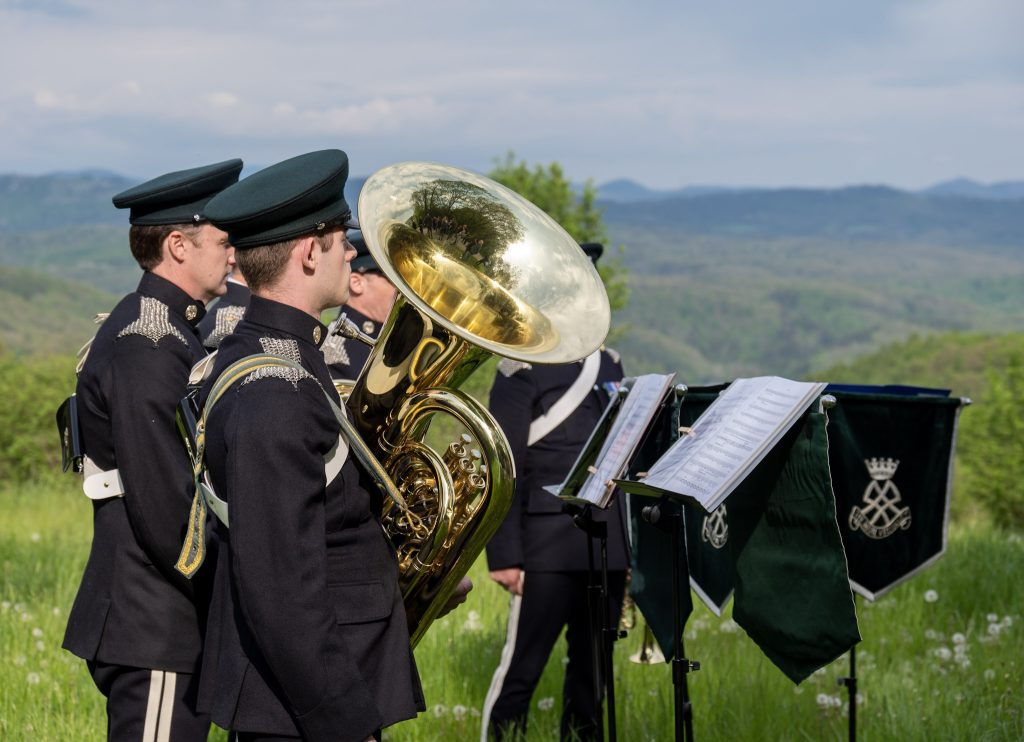
The ceremony featured the brass quintet of the Slovenian Armed Forces Orchestra and the brass quintet of the British military orchestra “Royal Yeomanry,” who also performed a short cultural program after the event.
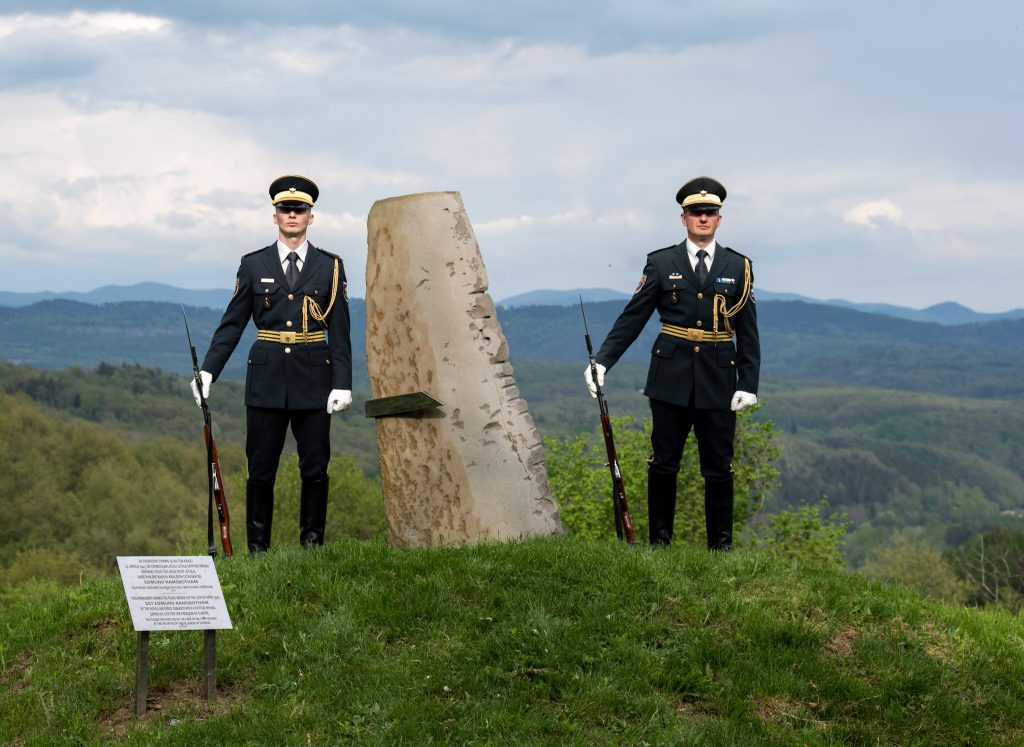
Working hours in May
The Park of Military History will be open in May from Monday to Friday between 10 am and 4 pm and on Saturdays and Sundays between 10 am and 6 pm.
Prior reservation of the time slot is mandatory for visiting the submarine’s interior and testing the flight simulator with MiG-21 or Spitfire airplanes as an additional museum offering. This can be done by calling +386 (0)31 775 002 or emailing [email protected].
This year, on May 13th, 2023, the Park of Military History will once again host the international miniature festival “World in Miniature” organized by the World in Miniature Society. Hundreds of modelers and miniature enthusiasts from different countries will compete for the best miniature in various categories.
On that day, the exhibited skillful miniatures of military vehicles, vessels, and scenic displays will significantly complement the museum’s display of military-technical heritage. As part of the festival, there will also be demonstrations of miniature-making and a miniature flea market.
On Sunday, May 14th, 2023, you can participate in an organized hike along the Circular Path of the Military History Park.


